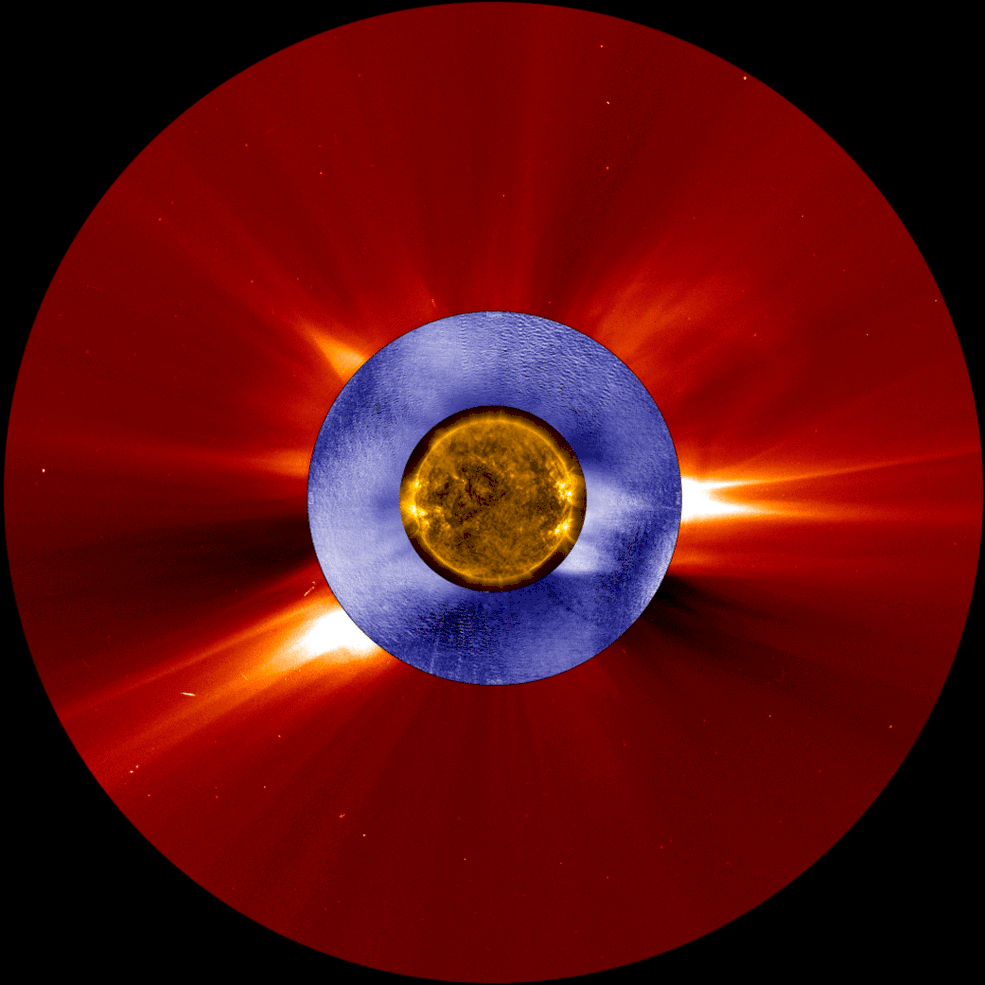When it Comes to Predicting Solar Storms, Space May Not Be the Place
A new study shows that earth-based observations can get warnings out sooner
/https://tf-cmsv2-smithsonianmag-media.s3.amazonaws.com/filer/03/35/0335a891-4a01-46bd-9b52-837cf1ceee29/20150307_m92_flare.jpeg)
When the first space-based solar observatories were launched, scientists quickly realized that they could do double duty—observe solar phenomena and help alert people back on Earth and in near orbit about incoming solar storms. But now, reports Space.com’s Samantha Mathewson, new research suggests that when it comes to getting quick information about space weather, Earth might be the best place after all.
In a paper in the journal Space Weather, researchers propose a system that speeds up the detection of solar storms using information gathered on Earth. That’s counterintuitive, given that Earth’s surface is shielded from the sun by an entire layer of atmosphere that prevents people from cooking in its coronal rays. But as Mathewson explains, the space-based instruments that measure solar weather only sample data every 20 to 30 minutes.
They’re called coronagraphs, and they’re installed on craft like NASA’s Solar Dynamics Observatory and ESA and NASA’s Solar and Heliospheric Observatory. The devices work by blocking the face of the sun’s bright star with a disc, then looking at what’s going on right outside of the disc. The atmospheric fluctuations there provide a clue as to what space weather is on the way to the rest of the solar system.
But there's a catch. Both the SDO and SOHO are really far from Earth—nearly 22,500 miles and more than 932,000 miles away, respectively. But that doesn’t present an advantage to researchers at home. They lament that the data they receive from the instruments is often already out of date.
It turns out that there’s another way to detect solar weather, though, using data collected right here on planet Earth. A relatively new coronagraph called K-Cor, located on top of Mauna Loa, a Hawaiian volcano, detects solar energetic particles up to 45 minutes before they head to Earth—and tens of minutes before they even leave the sun’s atmosphere. That’s a significant advantage over Earth-bound coronagraphs’ space-based cousins, providing space weather forecasts in near real-time.

Now, says NASA in a release, they’re working on improving the computing facilities at the Mauna Loa observatory to make the data available online even faster. In turn, that data could one day be used to provide forecasts to future astronauts almost instantaneously, allowing them more time to prepare for the effects of the incoming particles. Perhaps it could also allow Earthlings to power down electrical systems that could be susceptible to devastating damage during extreme solar storms.
Okay, so SDO and SOHO aren’t the best at warning people on or near Earth about incoming solar weather. Does that mean they should stop staring at the sun? No way: So far, solar data from the SDO has helped fuel over 2,600 scientific papers. It just goes to show that when it comes to space weather, it’s worth keeping an eye out no matter where you are.
/https://tf-cmsv2-smithsonianmag-media.s3.amazonaws.com/accounts/headshot/erin.png)
/https://tf-cmsv2-smithsonianmag-media.s3.amazonaws.com/accounts/headshot/erin.png)